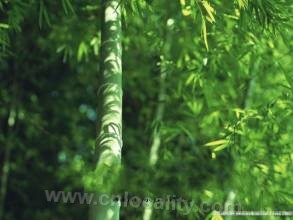welcomeSpecialty Foods Products!

Deqing county has a warm and humid climate and fertile soil. Hard-working people develop local products with their intelligence and creativity, adding icing on the cake to their hometown. Pine, bamboo and plum are known as "three friends in cold age", especially bamboo, which is firm, upright, restrained, open-minded and United, and has always been admired by literati. Zheng Banqiao, a famous painter and poet in Qing Dynasty, wrote a poem: "Insist that the green hills are not relaxed, and the roots are in the broken rocks. It' s still tough after thousands of blows, and it' s the east, west, north and south. " Praise its high morals and integrity. Bamboo has been widely planted in Deqing for a long time, and lush bamboo forests can be seen everywhere, whether in the remote mountains and wild docks in the west or in front of houses in plain water towns. The phrase "I would rather eat without meat than live without bamboo" tells the close relationship between bamboo and people's lives. There are many kinds of bamboo. The main bamboo species in Deqing are Phyllostachys pubescens, Phyllostachys pubescens, Phyllostachys pubescens, Phyllostachys pubescens, Phyllostachys pubescens and Phyllostachys pubescens. There are 139,020 mu of Phyllostachys pubescens, 43,727 mu of miscellaneous bamboo forests and 2,955 mu of Phyllostachys pubescens. Phyllostachys pubescens, Phyllostachys pubescens and Phyllostachys pubescens are mainly produced in villages and towns such as Raft Head, South Road, Houwu, Shangbai and Duihekou. Phyllostachys praecox is mainly produced in Wu Kang, Erdu, Qiushan, Chengguan, Leidian and Shangbai. At present, the income of bamboo forests in key producing areas such as Raft Head, Houwu and South Road accounts for 60-70% of the total income of forest products, which plays an important role in the economy. At present, there are 12,000 mu of high-yield bamboo forests in Deqing, 5,000 mu of large bamboo commodity bases for fishing, and 30 million bamboo stocks, with an average yield of 180 bamboo per mu. It can provide 2-3 million commercial Phyllostachys pubescens every year, and the maximum number of years can reach more than 4 million. More than 16 pieces are provided per mu, ranking first in the country (the average yield per mu in the country is 2.2 pieces). At present, the total output of bamboo in Deqing County is second only to Anji County of this province and Guangde County of Anhui Province, and it is one of the key bamboo producing areas in China. In recent years, the Phyllostachys pubescens market in northern Zhejiang is the largest trading market and distribution center of Phyllostachys pubescens in China. In the past, bamboo in Deqing was mostly sold to other places as raw materials. Nowadays, people in Guangdazhu District pay full attention to the development of bamboo resources, and rely on Moganshan, a tourist resort, to vigorously develop bamboo handicrafts in order to obtain greater economic benefits. Moganshan fan factory in Rafou Township uses local bamboo resources and makes exquisite and beautiful craft fans after deep processing, which are sold at home and abroad. Rafou Township Wood-based Panel Factory uses the waste from bamboo processing to make plywood, which saves the scarce wood for the country, makes full use of bamboo resources, makes the masses rich through labor, and supports national construction.
Reprinted with attribution:
https://cnlocality.com/(Chinese Specialty Products)
other
consult:(+86)13225231905